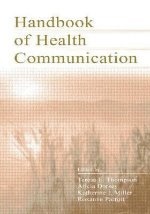Communication tips by Nursing on the Move.
 Are you a professional or a pre-professional?
Are you a professional or a pre-professional?
Do you use a second or foreign language at work?
Do you have a friend who speaks a foreign language at work or has a cultural background different from colleagues/customers?
Directive skills are powerful tools in medical interaction. During a consultation with a patient practitioners need to be aware of what language to use when asking questions. While the type of question affects the type and amount of information the patient will provide when replying, formulating your question in the right way will avoid confusion.
When asking a question during a consultation, you have to be clear and concise. The patient has to be able to follow your train of thought.
The language of a good question:
− is language that a patient can understand, which generally means using understandable, respectful and clear language and avoiding specific medical jargon.
− is structured in a way that makes it clear how to provide an answer.
It is not advisable to ask multiple questions in a row. Instead, introduce the patient to the series of questions and politely give them instructions on how to answer.
– ‘Do you feel the pain? When do you feel the pain? How long does it last?’
(many sequential closed questions)
Say …
→ ‘Sorry, to be complete, I now have to ask a series of short questions. A ‘yes’ or ‘no’ is OK.’
(apologise and announce what is going to happen, explain why)
 For more information, tips and examples, go here.
For more information, tips and examples, go here.
You can find an overview of all communication tips by Communication for Professionals here.
Mastering Difficult Interactions with Patients
April to June 2015, London, Great Britain
Find more information here.
Handbook of Health Communication 
By Teresa L. Thompson, Alicia M. Dorsey, Katherine I. Miller, Roxanne Parrott
The Handbook of Health Communication brings together the current body of scholarly work in health communication. With its expansive scope, it offers an introduction for those new to this area, summarizes work for those already learned in the area, and suggests avenues for future research on the relationships between communicative processes and health/health care delivery…shop the book.
An Evidence-Based Perspective on Greetings in Medical Encounters
by Gregory Makoul, Amanda Zick, Marianne Green
Abstract
Background : Widely used models for teaching and assessing communication skills highlight the importance of greeting patients appropriately, but there is little evidence regarding what constitutes an appropriate greeting.
Methods: To obtain data on patient expectations for greetings, we asked closed-ended questions about preferences for shaking hands, use of patient names, and use of physician names in a computer-assisted telephone survey of adults in the 48 contiguous United States. We also analyzed an existing sample of 123 videotaped new patient visits to characterize patterns of greeting behavior in everyday clinical practice…read more.
Tip: More up to date educational events dealing with communication for doctors and health professionals can be found online in the Education Database »medicine & health«.
